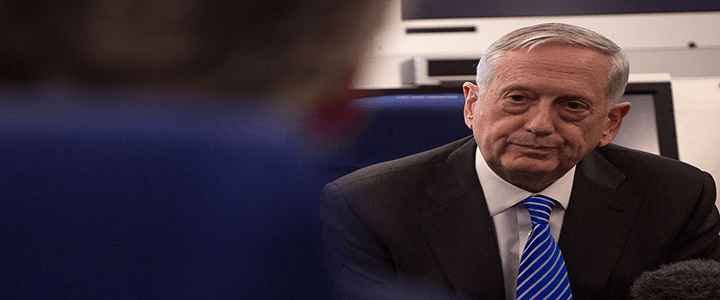As unpredictable as the Democratic People’s Republic of Korea may seem, their behavior is often very predictable. Sunday’s nuclear test, which they claim was of a hydrogen bomb, is an example.
Last week, when they DPRK fired a missile over Japan, we discussed how they had done so before, also during the annual U.S.-Republic of Korea exercises now known as Ulchi-Freedom Guardian. In fact, the DPRK has pulled many of its stunts during or immediately following the Ulchi-Freedom Guardian exercise.
In 2006, what was then called Ulchi-Focus Lens ran from August 21 to September 1. North Korea’s inaugural nuclear detonation came on October 9. Last year’s UFG exercise ran from August 22 to September 2. North Korea then detonated a nuclear warhead on September 9. This year’s exercise wrapped-up on August 31, and the North tested its latest device on September 3. Sense a pattern?
DPRK’s steady march forward
This isn’t the first time the DPRK has claimed to have detonated a hydrogen bomb (that was January 2016), nor is it the first time they’ve claimed to have built a warhead that can fit on a rocket (that was their last test in September 2016). But it is the first time they’ve claimed both. Given the pace of their developments, this is the logical next step, and is entirely plausible.
The U.S. Geological Survey says the blast was equivalent to a magnitude 6.3 earthquake, and could have been felt in China and Japan. For comparison (and the benefit of those who don’t live in California), the earthquake that hit the Washington, D.C. area in August 2011, seriously damaging landmarks such as the National Cathedral and the Washington Monument, was a magnitude 5.8.
The chairman of the South Korean parliament’s military committee, Kim Young-woo, told the Yonhap News Agency the blast was about 100 kilotons, making it four to five times more powerful than the 21 kiloton bomb dropped on Nagasaki, Japan in 1945. The most powerful of the DPRK’s previous detonations was 16.5 kiloton at best.
What does it all mean?
Kim Jong-un, as much as we like to call him “crazy,” surely knows there is no scenario where he uses a nuclear weapon, successfully or not, that does not end with the utter destruction of his country. Sunday afternoon, Secretary of Defense James Mattis, appearing alongside Gen. Joseph Dunford, chairman of the Joint Chiefs of Staff, told reporters that while the U.S. is “not looking to the total annihilation of a country,” he reminded the world “we have many options to do so.”
World leaders have done a lot to reduce the stockpile of nuclear weapons. According to the Bulletin of the Atomic Scientists, in 1986, the height of the arms race fueled by President Ronald Reagan’s build-up of U.S. strength, there were 64,000 nuclear warheads, with the overwhelming balance split between the U.S. and the Soviet Union, who had 23,317 and 40,159 respectively. India, Pakistan, and North Korea had not yet joined the nuclear fraternity, and South Africa (who doesn’t appear on the BAS charts) had not yet dismantled its six warheads (they did so in 1989).
Today, the BAS says there are 9,220 warheads, with the U.S. and Russia having 4,000 and 4,300 each. North Korea is believed to have fewer than 10.
4,000 nuclear warheads — in the hands of someone who everyone should believe has the will to use them — against a country with fewer than 10, and the means to deliver only a fraction of those anywhere. Given that overwhelming mismatch (and the still looming threat posed by missile defenses), the only thing that makes any sense is that Kim’s aim is to buy himself space.
He knows that a U.S./ROK conventional attack across the DMZ means tens if not hundreds of thousands of civilian deaths, and infrastructure damage that would make Hurricane Harvey look like child’s play. He also knows that given the odds, the temptation for his opponents to go nuclear fairly early in a conventional war would be great.
So he’s playing brinksmanship. His primary goal is to maintain his regime. Nuclear weapons are just his trump card. So color me concerned, but not yet panicked.




